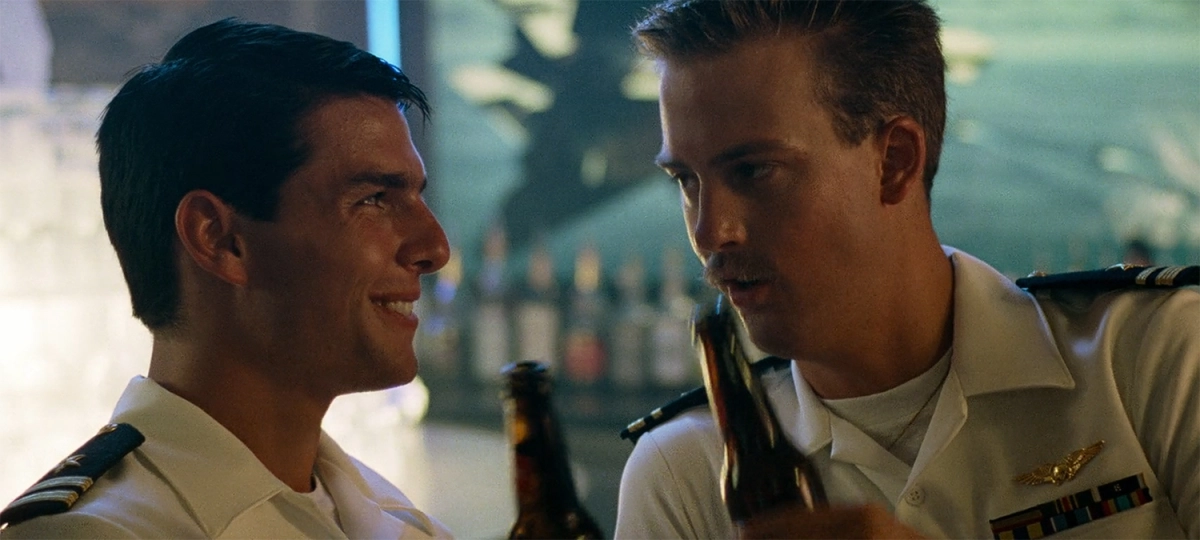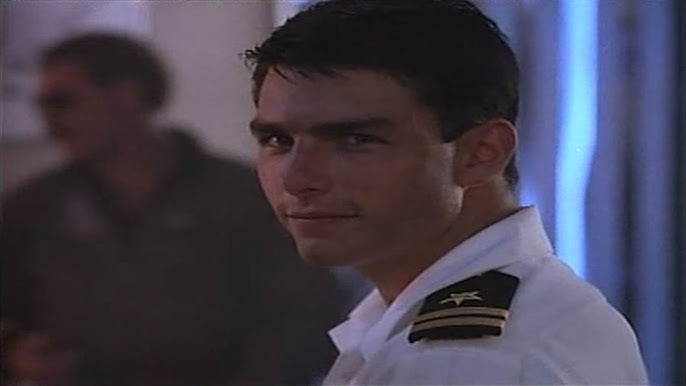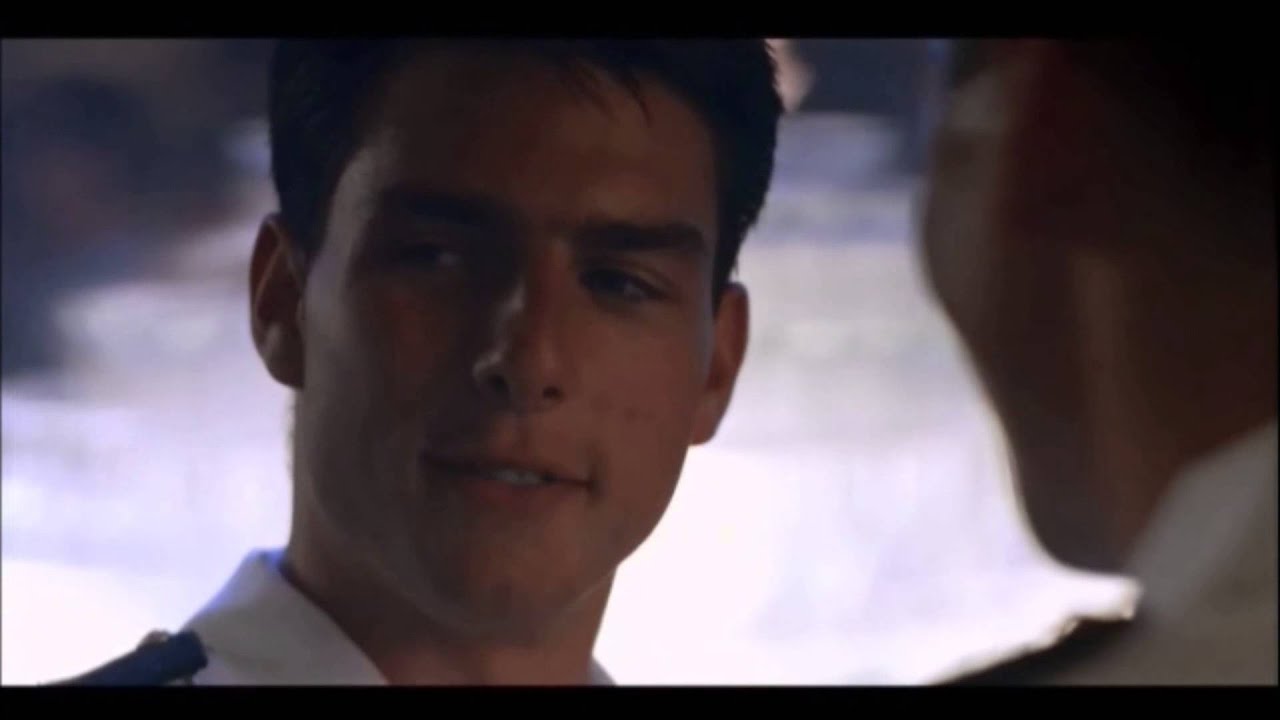🎬 Top Gun (1986)

Review of Top Gun (1986)
Tony Scott’s Top Gun (1986) is a high-octane blend of adrenaline-fueled aerial action and 1980s charm. As a defining film of its era, Top Gun catapulted Tom Cruise to superstardom, set the benchmark for aviation sequences, and became a cultural phenomenon that continues to resonate decades after its release. With its combination of breathtaking visuals, an iconic soundtrack, and themes of camaraderie and competition, the film remains a quintessential piece of pop culture.
A Story of Competition and Growth
At its core, Top Gun follows Pete “Maverick” Mitchell (Tom Cruise), a hotshot naval aviator with unmatched flying skills and a cocky demeanor. Maverick and his radar intercept officer, Nick “Goose” Bradshaw (Anthony Edwards), are selected to attend the Navy’s elite Fighter Weapons School—commonly known as “Top Gun”—where the best pilots train to become even better.
Maverick’s journey is one of personal growth, as he navigates intense rivalries, particularly with Val Kilmer’s Iceman, and grapples with the shadow of his father’s legacy. Along the way, he finds love with Charlotte “Charlie” Blackwood (Kelly McGillis), an astrophysicist and civilian instructor, and faces a devastating personal loss that challenges his confidence and character.
Tom Cruise’s Star-Making Role
Tom Cruise’s portrayal of Maverick captures the character’s bravado and vulnerability, establishing him as a magnetic leading man. Cruise’s energy and charisma drive the film, and his iconic smile and aviator sunglasses have become synonymous with 1980s cool. Maverick’s evolution from a reckless pilot to a disciplined team player is both engaging and satisfying, cementing the character as one of the most memorable in cinematic history.
Anthony Edwards’ Goose provides a perfect counterbalance to Maverick’s intensity, bringing warmth and humor to the story. The camaraderie between Maverick and Goose is a highlight of the film, grounding the high-flying action with genuine emotional stakes. Val Kilmer’s Iceman, with his cool and calculated demeanor, serves as a worthy rival, creating a dynamic tension that propels the narrative forward.
Thrilling Aerial Sequences
The aerial combat sequences in Top Gun are a masterclass in action filmmaking. Shot with unprecedented access to real Navy F-14 fighter jets, the film captures the speed, danger, and exhilaration of aerial dogfights. Tony Scott’s dynamic direction, combined with precision editing and practical effects, immerses viewers in the cockpit, creating an experience that feels both visceral and authentic.
The dogfights are not only visually stunning but also narratively impactful, serving as metaphors for the characters’ internal and external conflicts. The intense training exercises and climactic combat mission are perfectly paced, keeping the audience on the edge of their seats while showcasing the skill and bravery of the pilots.
Themes of Brotherhood and Competition
Top Gun explores themes of camaraderie, rivalry, and the pursuit of excellence. The relationships between the pilots, particularly the bond between Maverick and Goose, highlight the importance of trust and teamwork in high-stakes environments. The film also examines the fine line between confidence and arrogance, as Maverick learns the value of humility and discipline.
The rivalry between Maverick and Iceman underscores the competitive spirit that drives the Top Gun program. Their mutual respect, earned through competition and shared experiences, reflects the film’s message that greatness is achieved not in isolation but through collaboration and learning from others.
Iconic Soundtrack and Style
The Top Gun soundtrack is as legendary as the film itself, featuring unforgettable hits like Kenny Loggins’ “Danger Zone” and Berlin’s “Take My Breath Away.” These songs, paired with Harold Faltermeyer’s pulsating score, elevate the film’s emotional and adrenaline-fueled moments, making the music an integral part of its identity.
The film’s visual style, from its golden-hued sunsets to the sleek imagery of fighter jets, epitomizes the aesthetic of 1980s cinema. Tony Scott’s use of lighting, slow-motion, and close-ups amplifies the drama and spectacle, creating a movie that is as visually striking as it is emotionally engaging.
Critiques and Legacy
While Top Gun has been lauded for its entertainment value, it has faced criticism for its relatively thin plot and occasionally heavy-handed patriotism. Some have noted that the romantic subplot between Maverick and Charlie, while iconic, feels underdeveloped compared to the film’s focus on action and camaraderie.
Despite these critiques, Top Gun has had a profound cultural impact. Its influence extends beyond the realm of film, inspiring everything from fashion trends to increased interest in military aviation. The movie’s enduring popularity has led to the 2022 sequel, Top Gun: Maverick, which builds on the legacy of the original while introducing new audiences to its thrilling world.
Conclusion
Top Gun is a quintessential 1980s classic that combines heart-pounding action with compelling characters and unforgettable style. Tom Cruise’s star-making performance, the breathtaking aerial sequences, and the iconic soundtrack make it a film that continues to captivate and inspire. While it may lean on familiar tropes, its execution is so polished and entertaining that it remains a beloved staple of cinematic history. Whether you’re revisiting it for nostalgia or experiencing it for the first time, Top Gun is a must-watch for fans of action, adventure, and timeless storytelling.